Designing the margin
Editing: Andrea Perego
Research with: Selcen Sözüneri
Monday 07 December 2020
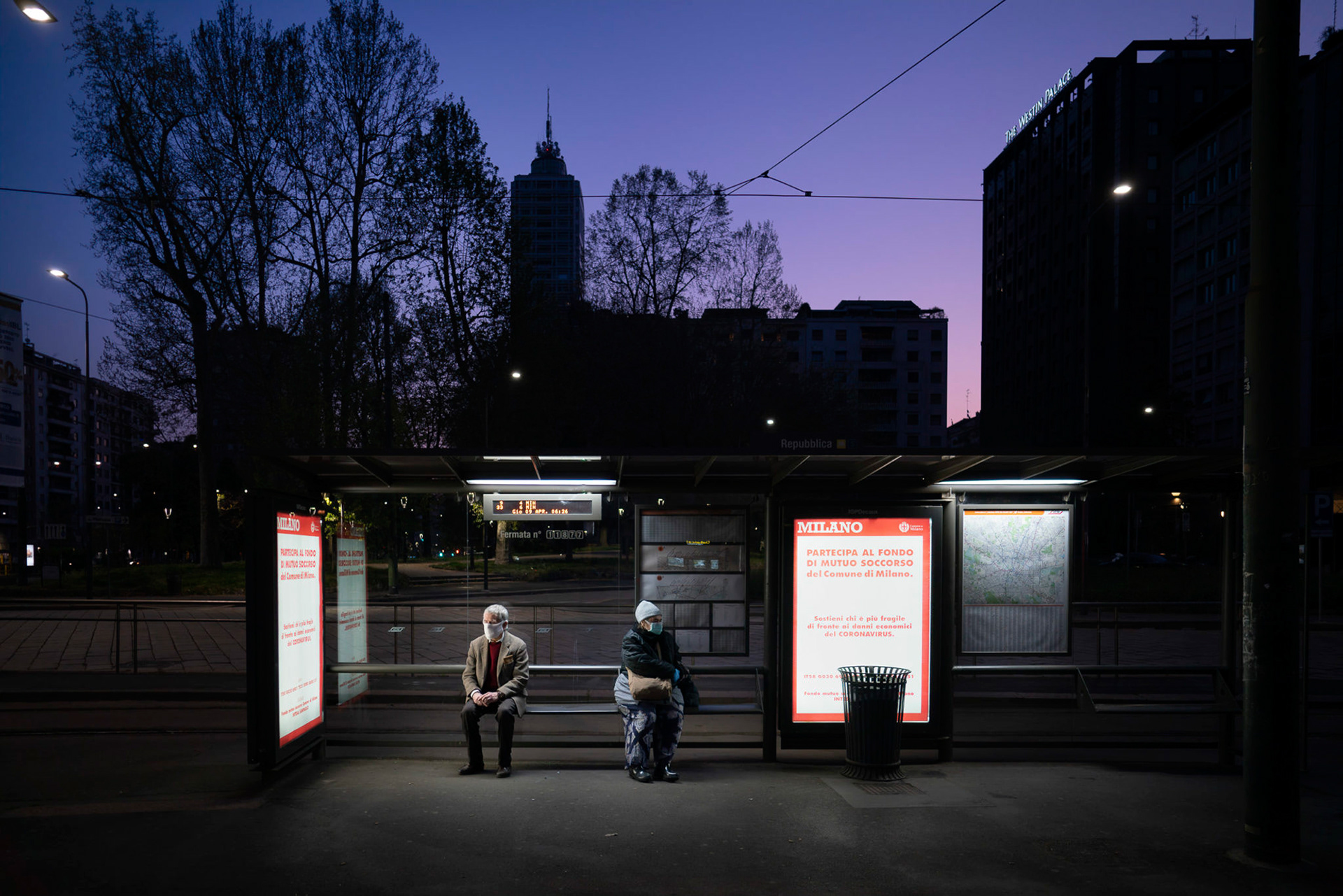
Photo Vittore Buzzi, Milano 2020
Cover image: Andrea Baggio, Milano 2020
A piano on wheels playing in the centre of Milan. A shot that dates back to last spring right after the end of the Quarantine, preview of Piano City Milano, the event that every May brings music to the parks and symbolic places of the city for a weekend. This year has been postponed to Autumn 2020. With this spirit Milano slowly left the isolation in which it lived for about three months. Although some of the public activities are still closed, the urban centre is slowly being repopulated and people started to live the city within new collective behaviours and "safety" rules. It is hard not to wonder what kind of impact we will have on our cities and ourselves.
Sidewalks have been widened to keep distance from others and new bicycles lines have been traced within the city centre becoming, more than ever, a primary form of personal transportation. The Milanese photographer Vittore Buzzi has shot a minimal but powerful gesture that speaks of forced cohabitations and distant neighbourhoods, lived in times of Quarantine and still felt.
Ever since the virus appeared in our lives, newspapers, magazines and blogs published many articles that portray even the most apocalyptic scenarios, such as the visions described by the great dystopian novelists. It’s difficult to chose between the pursuit of sensationalism and the fear of looming in a catastrophe greater than what we are experiencing.
Would we still want to live together so densely, working in open space offices and squeezing in elevators? Will houses need to be redesigned better to host both work and private life?
During the Quarantine what I observed from the window of my house was the postcard of a city never seen before, a ghost town, populated almost exclusively by riders and homeless, as testify the shots taken by Filippo Romano. In recent months our homes have become a micro-world where we have been forced to live in, we took care of them like never before. While the interior of our homes became a “labyrinth of the mind”, every opening, even if small, acquired an important role. Balconies, terraces, “ballatoi” have been once again the place for socializing with neighbours. The New York Times has published “Messages from Quarantine” a video realized by the Italian filmmakers Niccolò Natali and Nikola Lorenzin around those Quarantine days. This short documentary was shot with a drone that flew in a seemingly uninhabited suburbs of Milano, revealing however life flowing behind the windows, from balconies and “ballatoi”. The images are accompanied by a series of voice messages from people who tell about their problems, fears and small happiness during those weeks.
On the other hand the boundaries of our homes have become a real Margin of physical separation and distancing from the external space and from our beloved ones.
In the photographic project called Inside Out by Gabriele Galimberti this Margin is shown through the story of the life of the Milanese portrayed beyond the windows of their homes. We suddenly found ourselves to give up the physical contact of the handshake, forced to disregard our nature as social beings, erecting a wall to protect our personal space from any external interference. Every form of socializing and sharing in presence has become a challenge and an intrusion within the other’s private sphere. Thanks to the mediation of the technological devices, which we are all equipped, many apparent escapes from the pure functionality of our homes were possible. We kept in touch with the outer world through a relationship that fed on videoconferences, digital birthdays or online meetings.
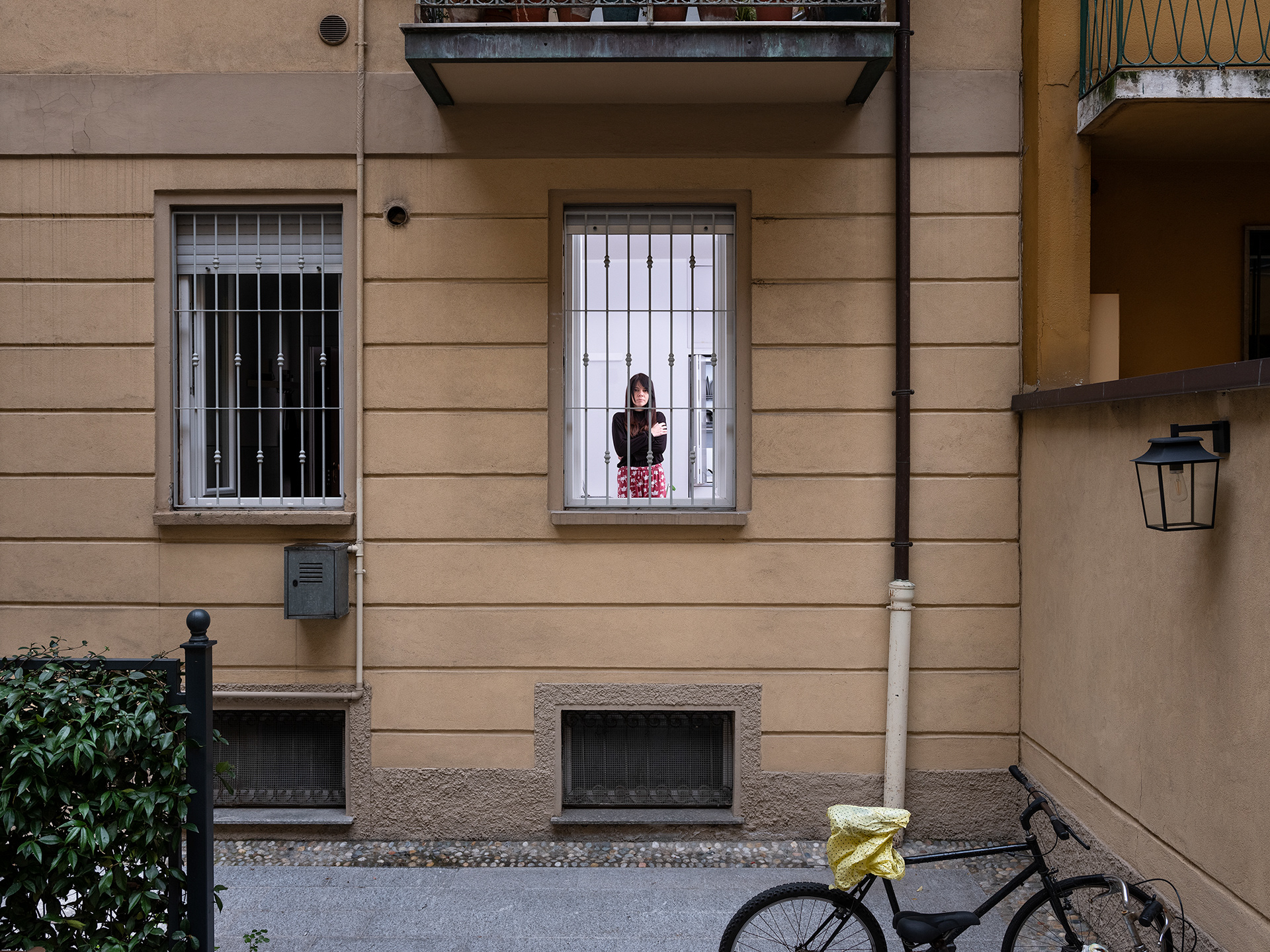
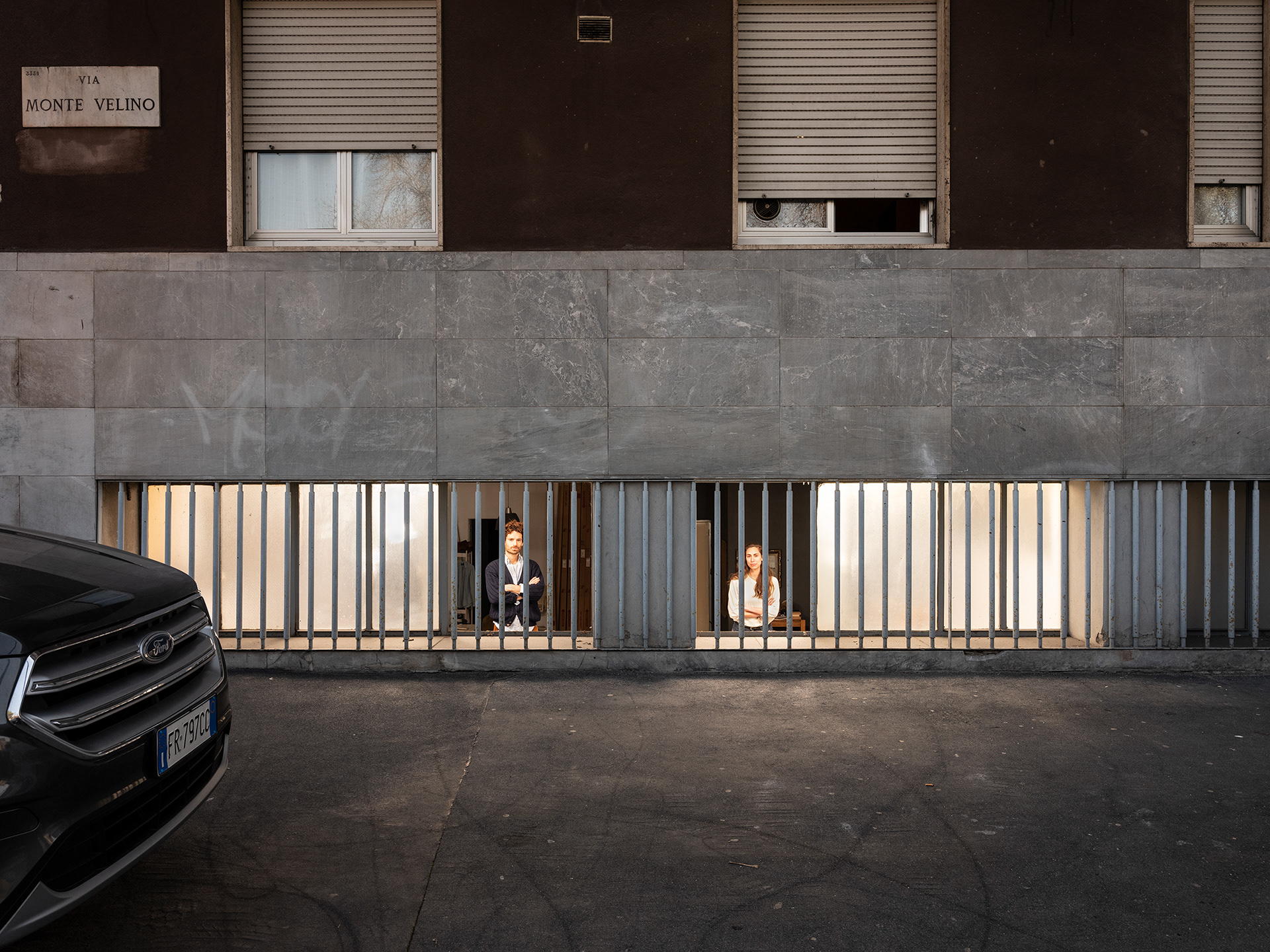
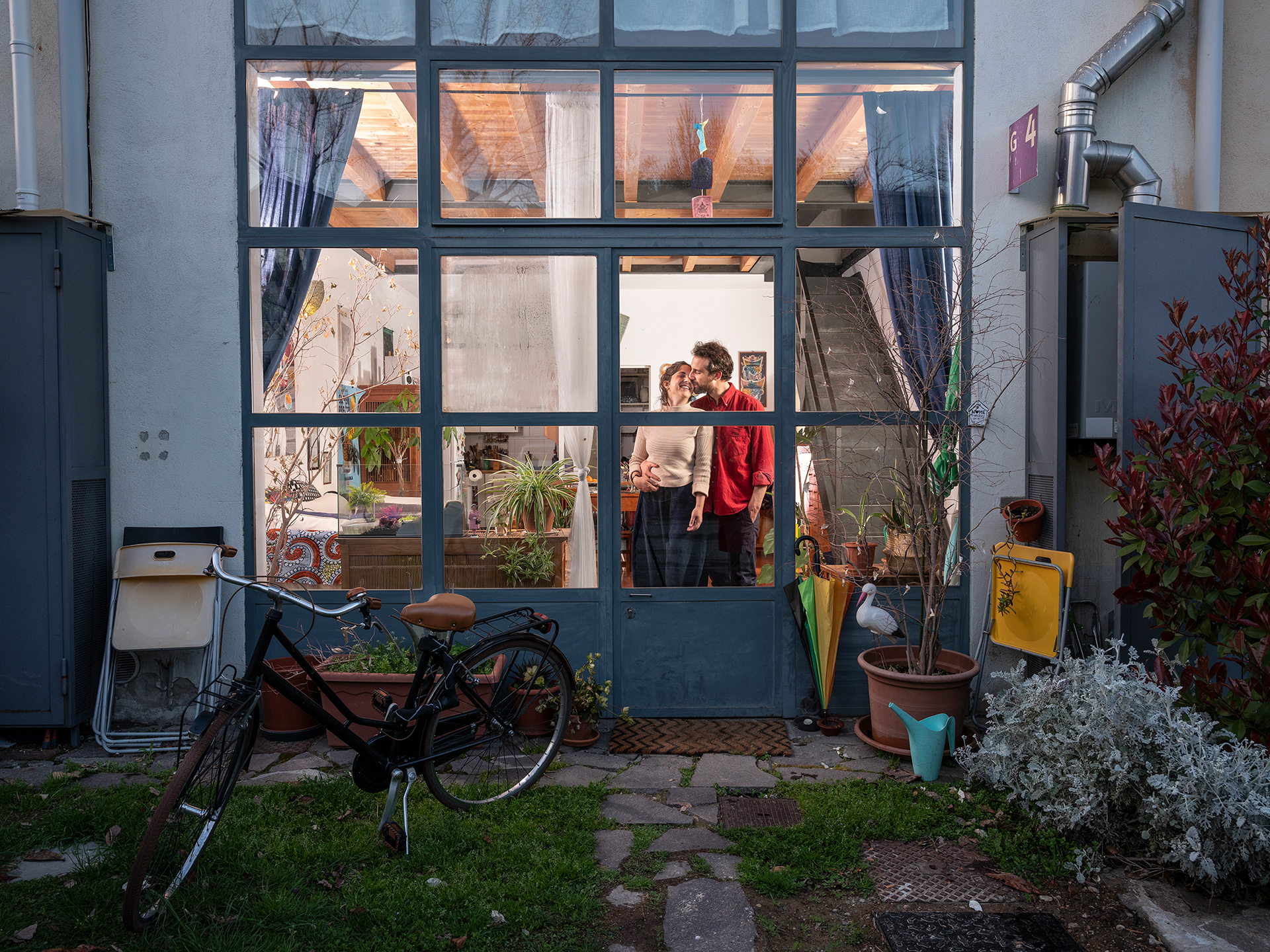
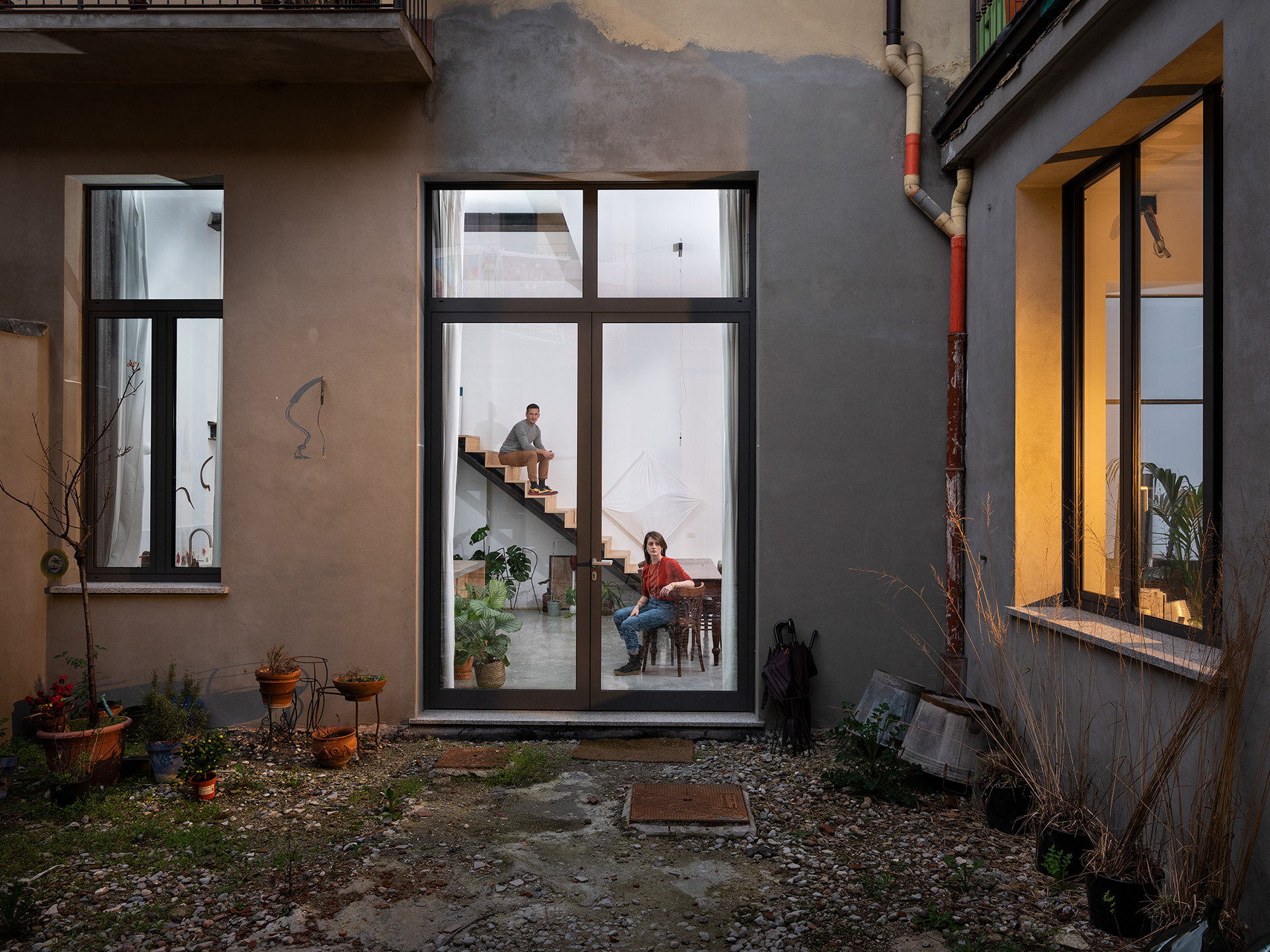
Inside Out, a photographic project realized by Gabriele Galimberti. See the complete project here.
During the Quarantine the city visible from our windows has become a static scene, but in recent years its speed has been absorbing more and more the lives spent inside our homes. The traditional conception of the house, indeed, has been transformed through the cancellation of the inhabited space as we have always considered it. The Home Economics exhibition, set up in the United Kingdom Pavilion at the 2016 Venice Architecture Biennale, explored new ways of living through the relationship between domestic space and the time spent in it by its inhabitants. Hours room, days room, months room, years and decades rooms were built on a one-to-one scale, depicting how the traditional house was transforming influenced by the discontinuity and fragmentation of the new housing models.
The phenomenon of Globalization has affected the nature of social relationships by changing the identification of the home with the traditional family. Apparently the on-going process that was changing the configuration of our way of using cities through a "shared economy" made up of Airbnb, Carsharing, Co-Working / Housing seems to have stopped. Sharing and reduction of distances grafted onto the concepts of “Liquid society” seem to be in crisis for fear that an invisible threat could come from proximity to our neighbour. These experiences have contributed to change the margin between public and private, interior and exterior of the domestic space. Therefore, this cohabitation trend could change radically under the pressure of this unexpected condition.
How virus has changed our cities? In this regard we can find many examples in history.
This will not be the first time in which cities and buildings will be reinvented or redesigned in response to a greater understanding of the disease.
One for all we can remember how the Milenese Cerchia dei Navigli, a circle of canals that enclosed the medieval old town, was completely buried for reasons of city hygiene in the 1930s. "The city benefited from it in modernization, but it completely lost its face as a "city of water". Form, as much as function, have always followed the fear of infection.
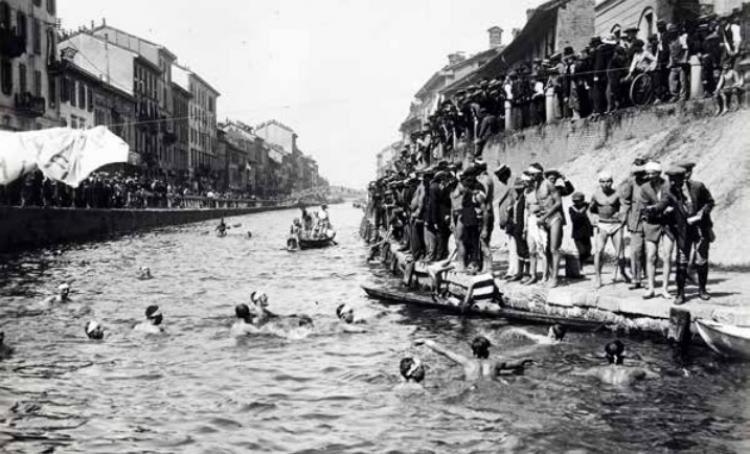
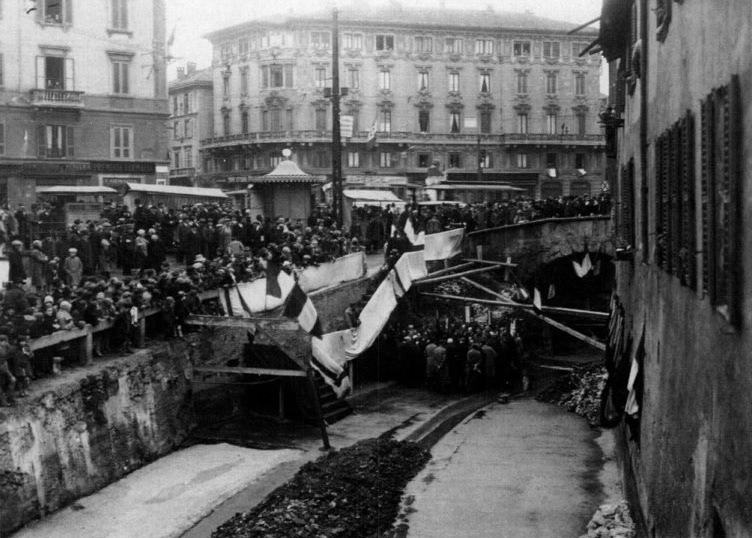
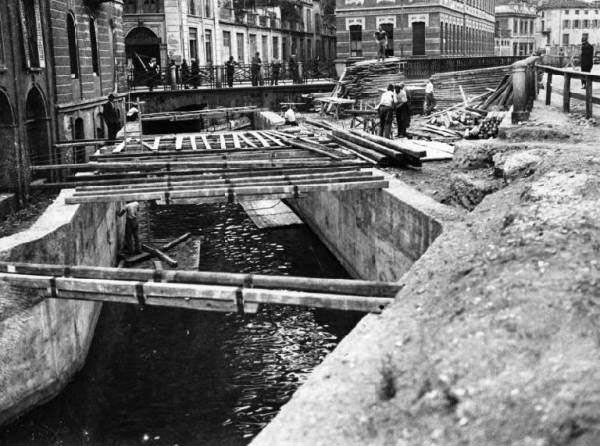
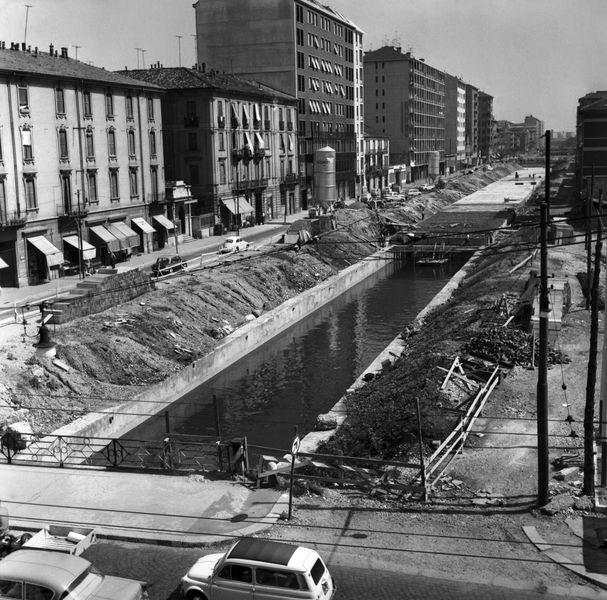
Swimming competition on the Naviglio Grande, 1913 - Inauguration of the roofing works of the Naviglio Vallone with the laying of a commemorative plaque, March 1929. (FCA Milano historical archive) - Coverage of the Naviglio di San Marco, 1935 - The roofing works of the Naviglio della Martesana, 18/07/1961
It is said that this pandemic is only the first of many others: this or other viruses could return cyclically. If not the virus itself, but the idea of an invisible and microscopic threat will remain among us, for example in public places. As the American sociologist Jeffrey C. Alexander wrote: "a cultural trauma is not the event itself, but how much an event shocks the collective identity of a population and, in turn, how much it subverts the sense of security of each individual within the society”. Above all, the impression is that we will carry with us this feeling of individual insecurity and anxiety for our physical well-being and our loved ones: we will not forget the year 2020 either as individuals or as a community.
How can we design cities and buildings capable of overcoming and adapting to shocks such as climate change, financial or health crises?
The psychophysical dimension of the human being and his relationship with nature, in post-Quarantine design thinking, are therefore essential aspects for defining the identity of the home and the new needs of its inhabitants. Often architects to support their own legitimacy invoke extraneous causes, in fact our profession is appealed in many ways. We have: green architecture, sustainable architecture, community architecture, architecture of participation, etc ... The architecture now is no longer something that you can express in stylistic forms, but through a search for the building's performance in accordance with certain technical parameters. In many projects the aspect of "environmental sustainability", of which I recognize the importance, triggers dynamics oriented to use the “green approach” more as a marketing strategy rather than a conscious design process. In the work of many architects the relationship between artefact and nature is recognizable in a presumed environmental awareness, where nature, therefore, is never presented directly, but always rebuilt in an exclusive and elitist version.
How we should consider the relation between artefact and nature today?
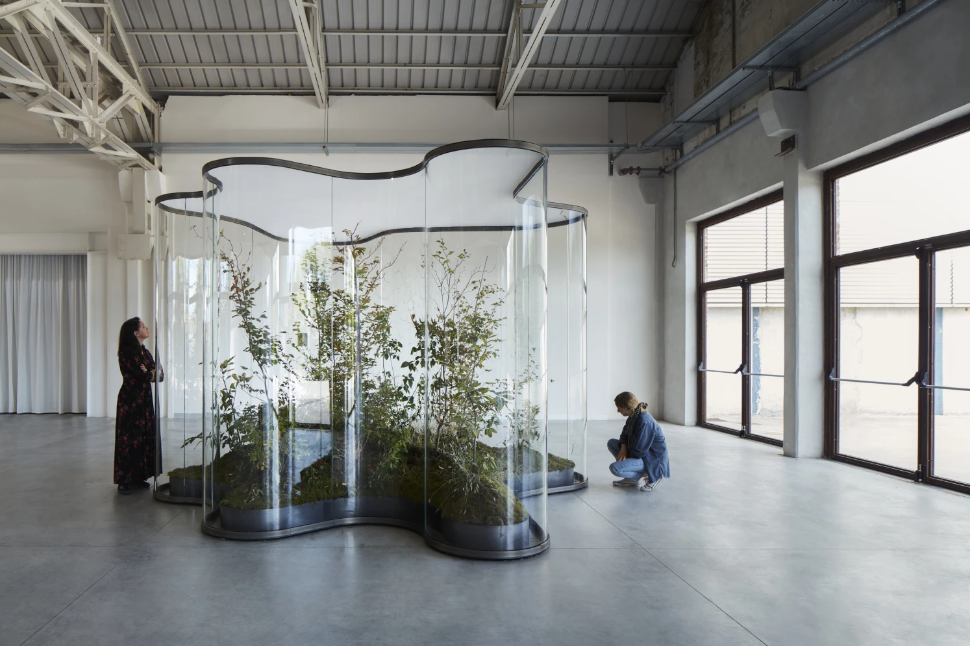
Daniel Steegmann Mangrané, A Leaf-Shaped Animal Draws The Hand, Hangar Bicocca, 2019-20 Milano
This post-quarantine report gives a synthetic but effective picture of the situation in which we found ourselves living within the walls of our home for months. These walls were the skin that protected but also separated us from the external word. Beyond any technological device that we can use to keep relationships with our loved ones alive, I believe that our practice could adopt new tools to investigate the definition of the house identity and the needs of its inhabitants to formulate a new “existenzminimum”. We should conceive the design not only in its functional, aesthetic and ergonomic aspects, but opening our discipline to a comparison and collaboration with other subjects (philosophy, medicine, psychologist).
It is time to activate a reflection that contrasts the static nature of residential typological design of recent years with other values, other lines of meaning which, if deepened, can create new opportunities for development and also outline the writing of new housing standards.
This article is taken from a lecture we gave at Mimar Sinan University of Istanbul - 2.06.2020)
Contents curated by
Noname Studio